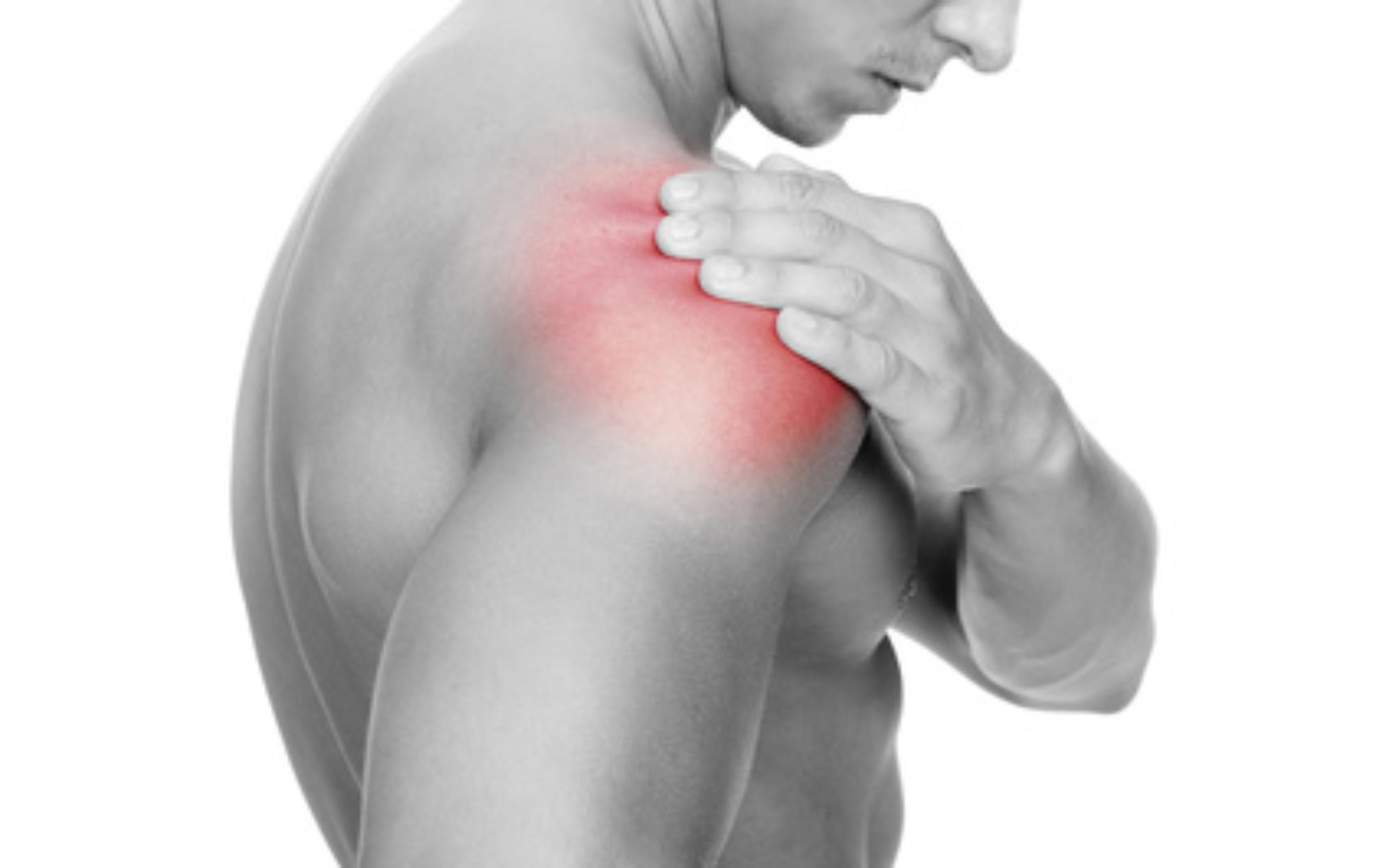Post-Operative Phase I (Day 1-Week 3)
Goals:
- Minimize shoulder pain and inflammatory response
- Protect the integrity of the surgical repair: NO shoulder or elbow active range of motion (AROM) until week 3
- Gradually restore pain free passive range of motion (PROM)
- Enhance/ensure adequate scapular function
Sling:
- To be worn at all times except when bathing or performing therapy PROM:
- Glenohumeral (GH) flexion to 90 degrees
- Abduction in the plane of the scapula to 90 degrees
- Internal rotation (IR) to 45 degrees at 30 degrees of abduction
- External rotation (ER) to 25 degrees at 30-40 degrees of abduction; respect anterior capsule tissue integrity with ER ROM.
Therapeutic Exercises:
- Pendulum exercises
- Scapular stabilization exercises
- Ball squeezes
- Active assisted and active range of motion (AAROM/AROM: wrist, fingers, and supination/pronation with arm in
sling (at 90 degrees of elbow flexion)
- Passive elbow flexion/extension
- At week 3: Initiate Submaximal GH isometrics: flexion, extension, abduction, IR, ER
Modalities/Education:
- Frequent cryotherapy for pain and inflammation
- Pre-modulated electrical stimulation to shoulder for pain reduction
- Patient education regarding posture, joint protection, positioning, hygiene, etc.
Manual:
- Scar and soft tissue mobilization as needed
- GH, Sternoclavicular (SC), scapularthoracic (ST), and thoracic joint mobilizations: Grade I-II
Post-Operative Phase II (Week 4-6)
Goals:
- Minimize shoulder pain and inflammatory response
- Protect the integrity of the surgical repair
- Progress PROM
- Begin light waist level activities
Sling:
- Discontinue use of pillow as directed by physician/therapist after week 4.
- Begin to wean from sling between weeks 5-6.
- Discontinue sling as directed by physician/therapist after week 6
ROM:
- Progress shoulder PROM (do not force any painful motion)
- Forward flexion to 160 degrees
Abduction in the plan of the scapula to 120 degrees o IR to 60 degrees at multiple angles of abduction - ER to 35 degrees at 0-40 degrees of abduction then progress to multiple angles of abduction o Initiate extension to 40 degrees at 6 weeks
Therapeutic Exercises:
- Posterior capsular stretching as needed
- Progress to AAROM/AROM exercises of the shoulder with proper GH rhythm
Full active elevation in the scapular plane should be achieved before beginning active elevation in other planes
- Continue AROM of elbow, wrist, and hand
- Progress scapular stabilization exercises
Modalities:
- Continue cyrotherapy for pain and inflammation
- Pre-modulated electrical stimulation to shoulder for pain reduction
Manual:
- Scar and soft tissue mobilization as needed
- GH, AC, SC, thoracic and ST joint mobilizations : Grade I-IV as needed
Post-Operative Phase III (Week 7-9)
Goals:
- Achieve normal GH and scapular rhythm
- Achieve PROM WNL
- Progress to AROM WNL
- Remain pain free for all exercises
ROM/Therapeutic Exercises:
- Progress as tolerated, concentric and eccentric exercises
- Achieve full PROM/AROM in a given plane before strengthening in that plane
- Initiate:
- Closed chain activities
- Light pec stretch to tolerance
- ER/IR strengthening
- Side lying ER with towel roll
- Manual resistance to ER in supine in scapular plane
- ER/IR with exercise tubing at 0 degrees of abduction (towel roll)
- Prone rowing at 30/45/90 degrees of abduction to neutral arm position
- Begin rhythmic stabilization drills
- ER/IR in the scapular plane
- Flexion/extension and adduction/abduction at various angles of elevation ·Progress AROM to isotonics: flexion, scaption, abduction
Manual:
- Scar and soft tissue mobilizations as needed
- GH, AC, SC, thoracic and ST joint mobilizations: Grades I-IV
Cardio:
- Stationary bike, elliptical with light upper body, stair climber Modalities:
- Continue cyotherapy for pain and inflammation
- Pre-modulated electrical stimulation to shoulder for pain reduction
- Continued patient education: posture, joint protection, positioning, hygiene, etc.
Post-Operative Phase IV (Week 10-15)
Goals:
- Normalize strength, endurance, neuromuscular control; All UE MMT grades 5/5
- Return to shoulder height functional activities
- Gradual and planned buildup of stress to anterior joint capsule
Precautions:
- Do not overstress the anterior capsule with aggressive overhead activities/strengthening
- Avoid contact sports/activities
- Patient education regarding a gradual increase to shoulder activities
Activity:
- Continue A/PROM as needed
- Initiate biceps, pectoralis major/minor, and serratus anterior strengthening
- Progress subscapularis strengthening to focus on both upper and lower segments:
- IR resistive band at 45, 90 degrees of abduction
- Progress isotonic strengthening if patient demonstrates no compensatory strategies, is not painful, and has no residual soreness
Post-Operative Phase V (Week 15 – 24/Return to Sport)
Goals:
- Maintain full non-painful P/AROM
- Return to full strenuous work, throwing, and overhead activities
Precautions:
- Avoid excessive anterior capsule stress
- DO NOT PERFORM: tricep dips, wide grip bench press, military press or lat pulls behind the head.
- Do not flex elbows past 90 degrees in weight bearing positions
- Be sure to “always see your elbows”
- Do not begin plyometrics, throwing, or overhead athletic moves until 4 months post-op.
Therapeutic Exercise:
- Continue to advance scapula and upper extremity strengthening as tolerated in all planes o Include: diagonal/functional patterns, 90/90 strengthening, and CKC exercises
Cardio:
- Stationary bike, jogging/running/sprinting on treadmill, elliptical, rowing, kick board in swimming pool, stair climber
Milestones for return to sport activities and clearance:
- Completion and passing of shoulder functional test at MD PT clinic
- No complaints of pain or instability
- Adequate ROM for task completion bilaterally
- Full strength and endurance of rotator cuff and scapular musculature for task completion bilaterally
- Regular completion of home exercise program

